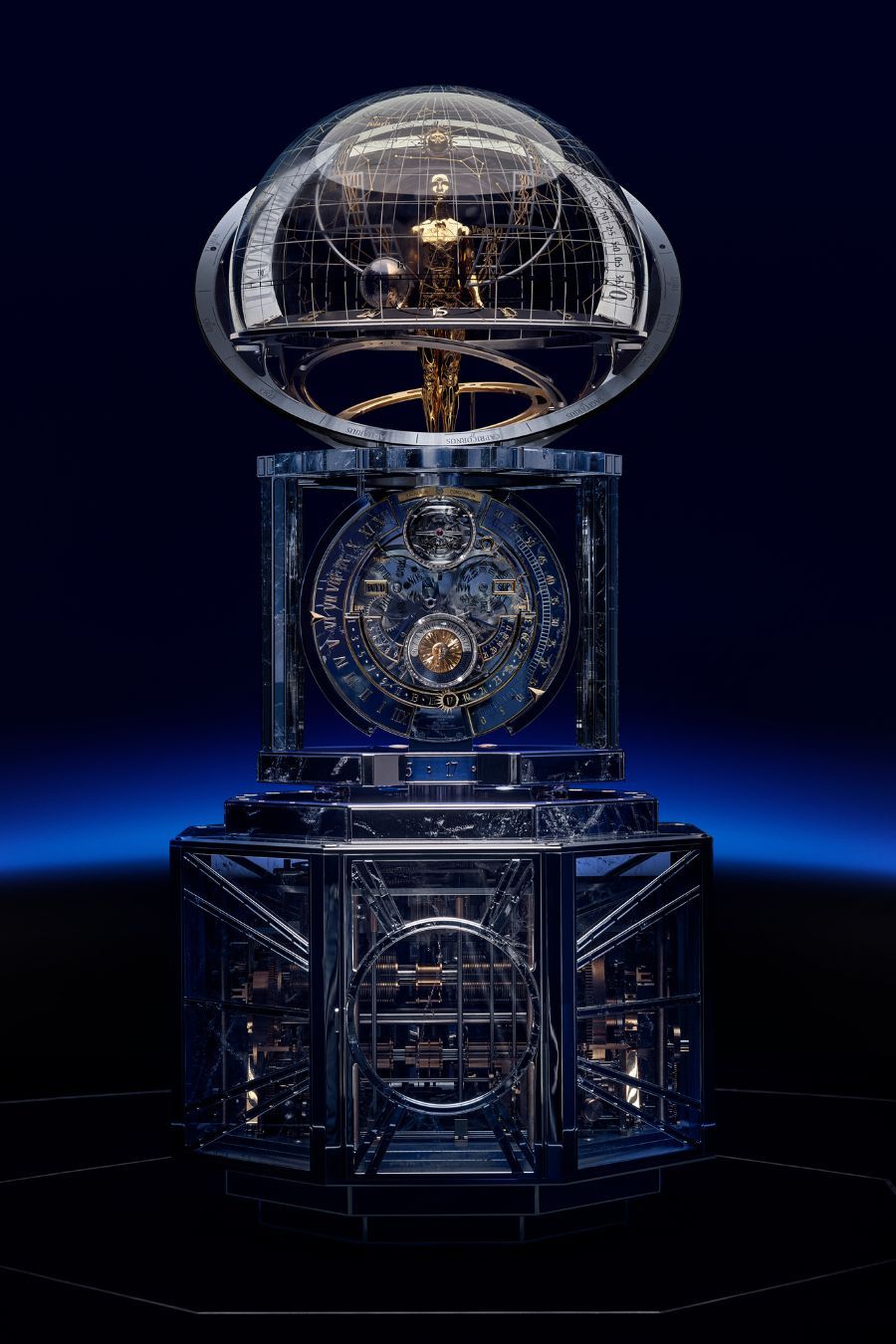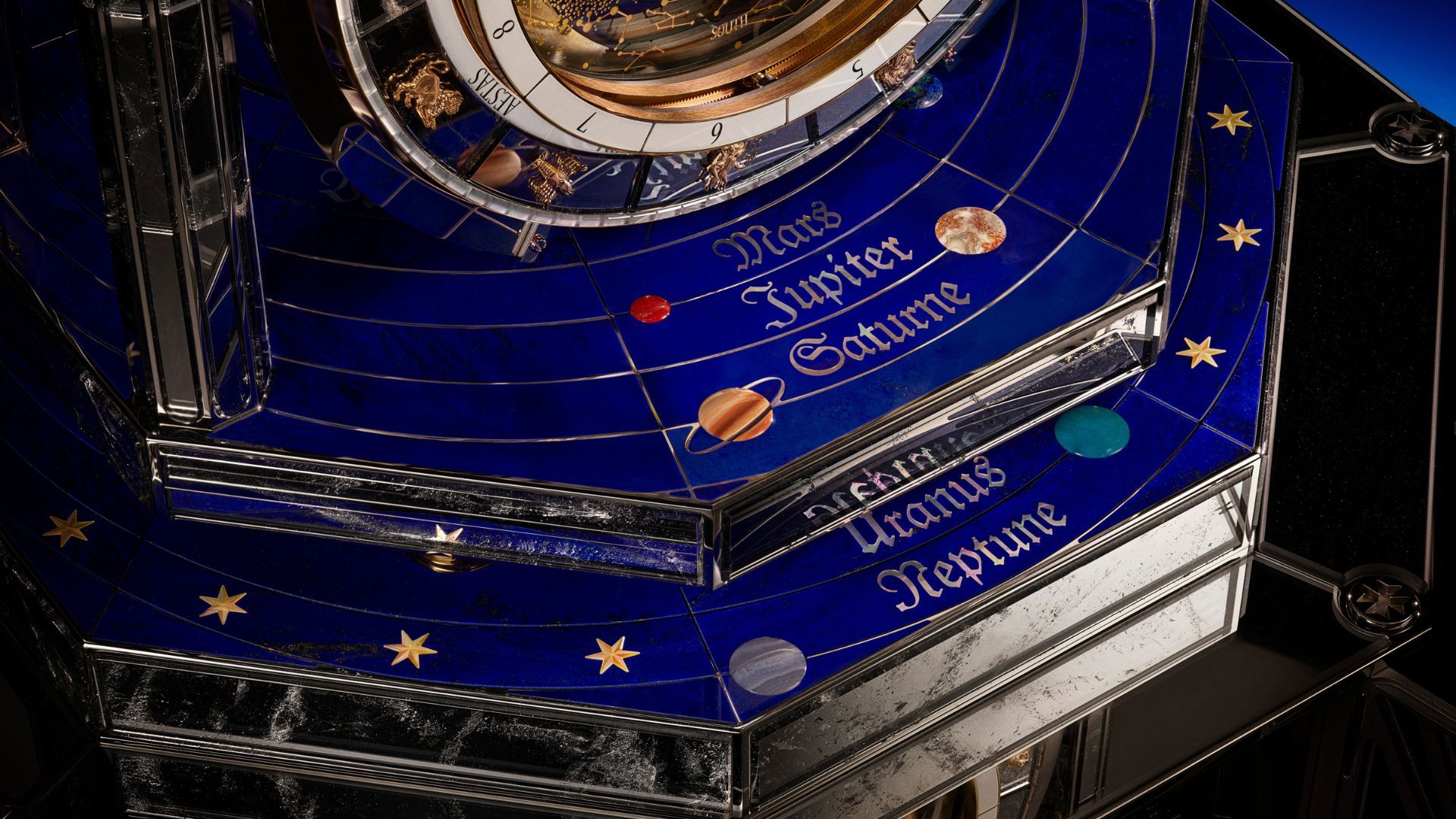When a brand turns 270, you half-expect a safe celebratory reissue, maybe an enamel-dial dress watch and some retrospective copy about “timeless values.” Vacheron Constantin, though, seems to have read the assignment differently. To mark its birthday, the maison hasn’t just made another complicated watch. It’s built an enormous automaton clock weighing a quarter of a ton, accompanied by a 20-piece limited edition wristwatch that borrows its DNA. This is Vacheron stretching its legs, and the result feels closer to mechanical theatre than a watch launch.
The Clock: La Quête du Temps
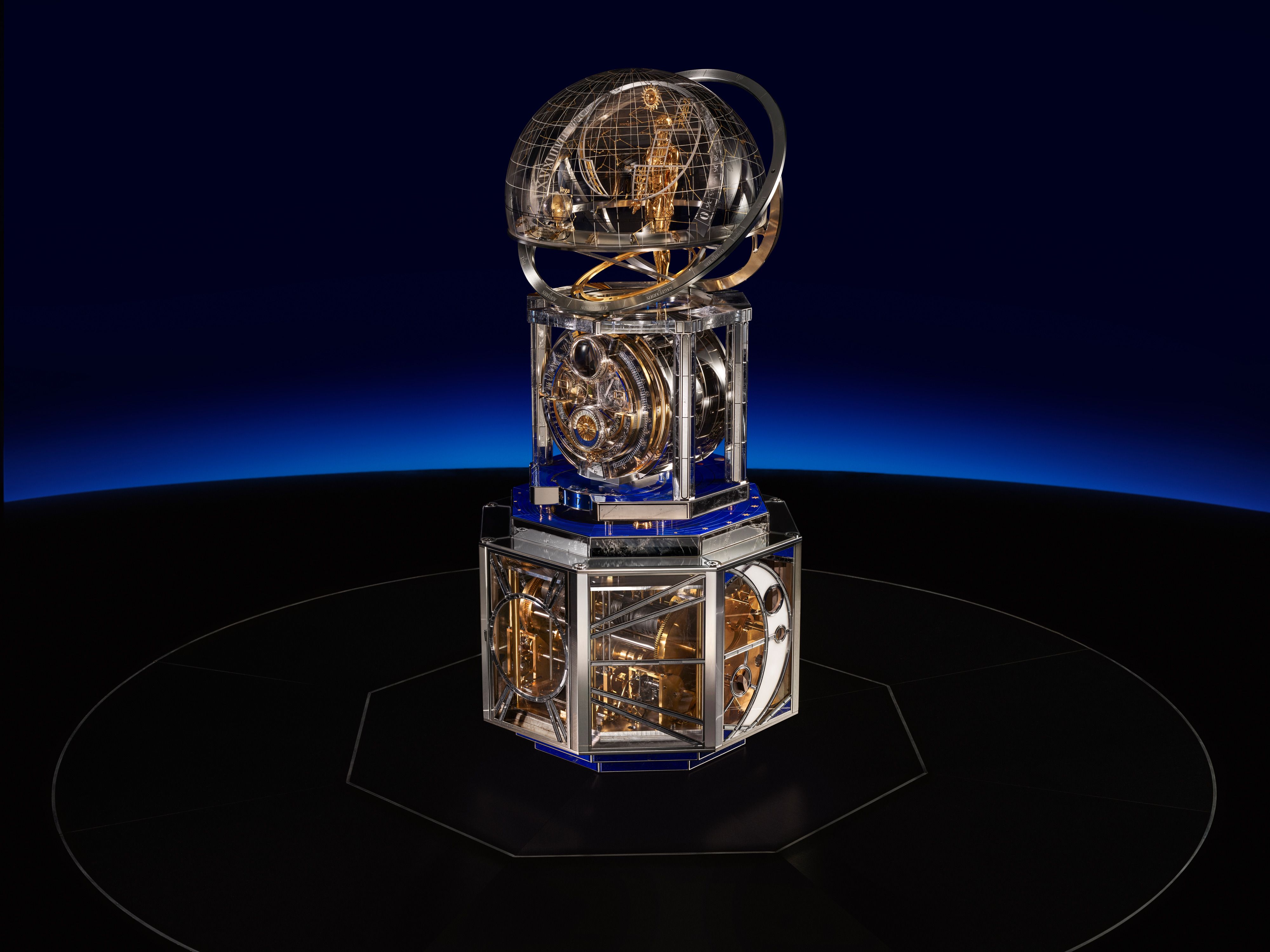
La Quête du Temps — “The Quest of Time” — is an astronomical clock with a performing automaton at its heart. Standing over a metre tall, capped by a glass dome and grounded on a plinth of lapis lazuli, it’s the sort of object you expect to see behind velvet rope in a museum. Which, fittingly, is exactly where it’s going: the Louvre has agreed to display it as the centrepiece of its Mécaniques d’Art exhibition, an almost unheard-of concession for a contemporary creation .
The showpiece is the Astronomer, a figure who sits beneath that dome gazing at a celestial vault painted to mirror the Geneva sky on 17 September 1755 — the day Jean-Marc Vacheron signed on his first apprentice. He’s not just set dressing: the Astronomer is an automaton capable of three choreographed sequences. At one point he gestures towards the randomised hour and minute scales that float at his sides; at another, he points out constellations as specially composed music (by Woodkid, no less) plays from an internal metallophone and wah-wah tubes . Each performance lasts about ninety seconds and, thanks to the scrambled numerals, is never quite the same twice.
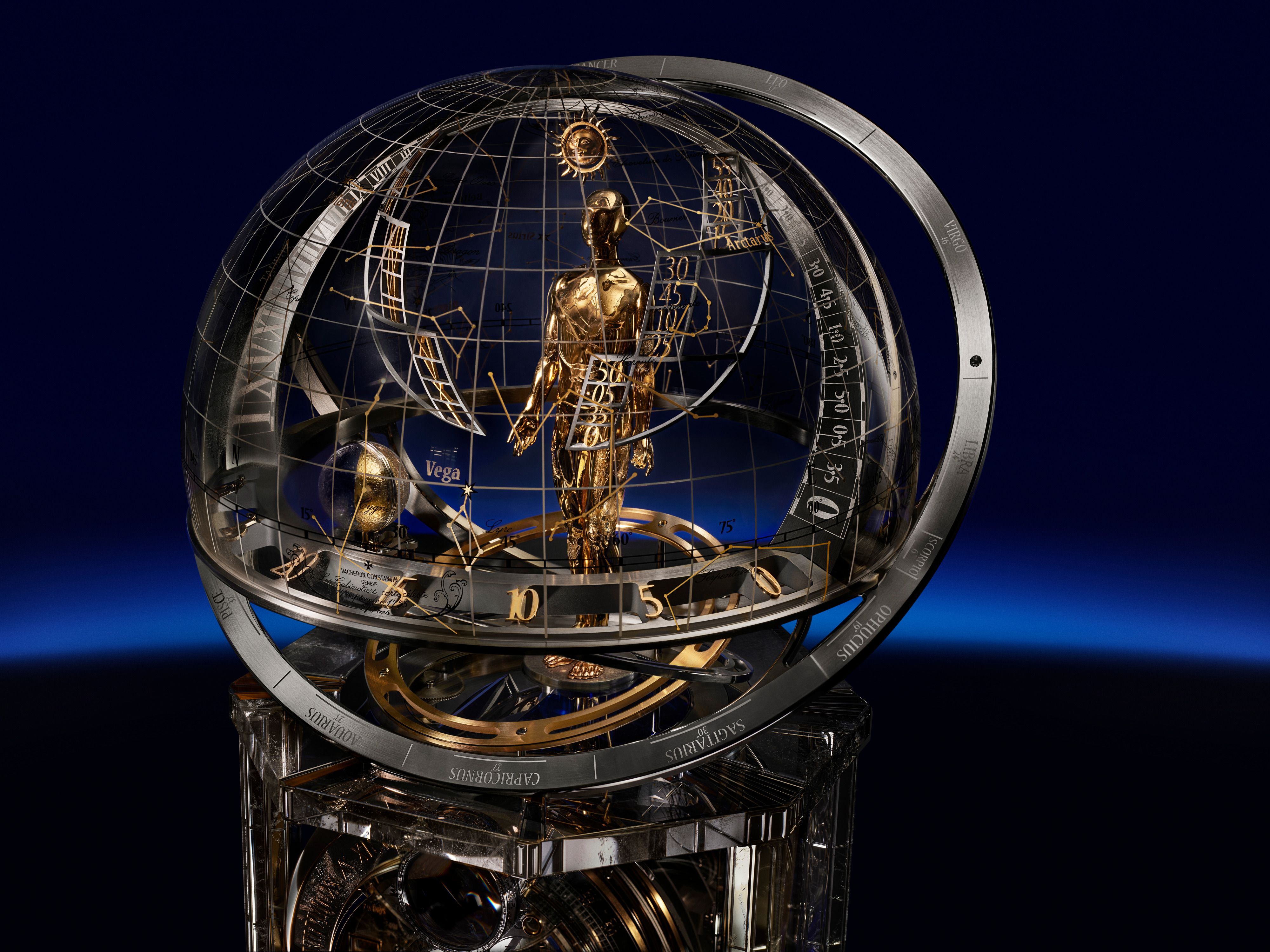
Driving the whole spectacle is calibre 9270, a manually wound engine made of 2,370 parts. It brings 23 complications to the table — everything from a Gregorian perpetual calendar to sunrise/sunset times, zodiac indications, and a moonphase so precise it won’t need correction for 110 years. A huge tourbillon, 28mm across, spins in a Maltese cross cage under a magnifying lens. Powering all this: five barrels for the clock and another for the moonphase. The total component count across clock and automaton comes to 6,293. That’s not a typo .
The base doubles as both decorative flourish and functional engine room. On its surface, a marquetry solar system of mother-of-pearl planets revolves over a deep-blue lapis background. Beneath, the automaton’s mechanism takes up residence, with cams, shafts and that aforementioned music machine. François Junod — often described as the world’s greatest living automatier — lent his hand here, just as he did on Vacheron’s secret “L’Esprit des Cabinotiers” clock back in 2005.
The Watch: Métiers d’Art Tribute to the Quest of Time
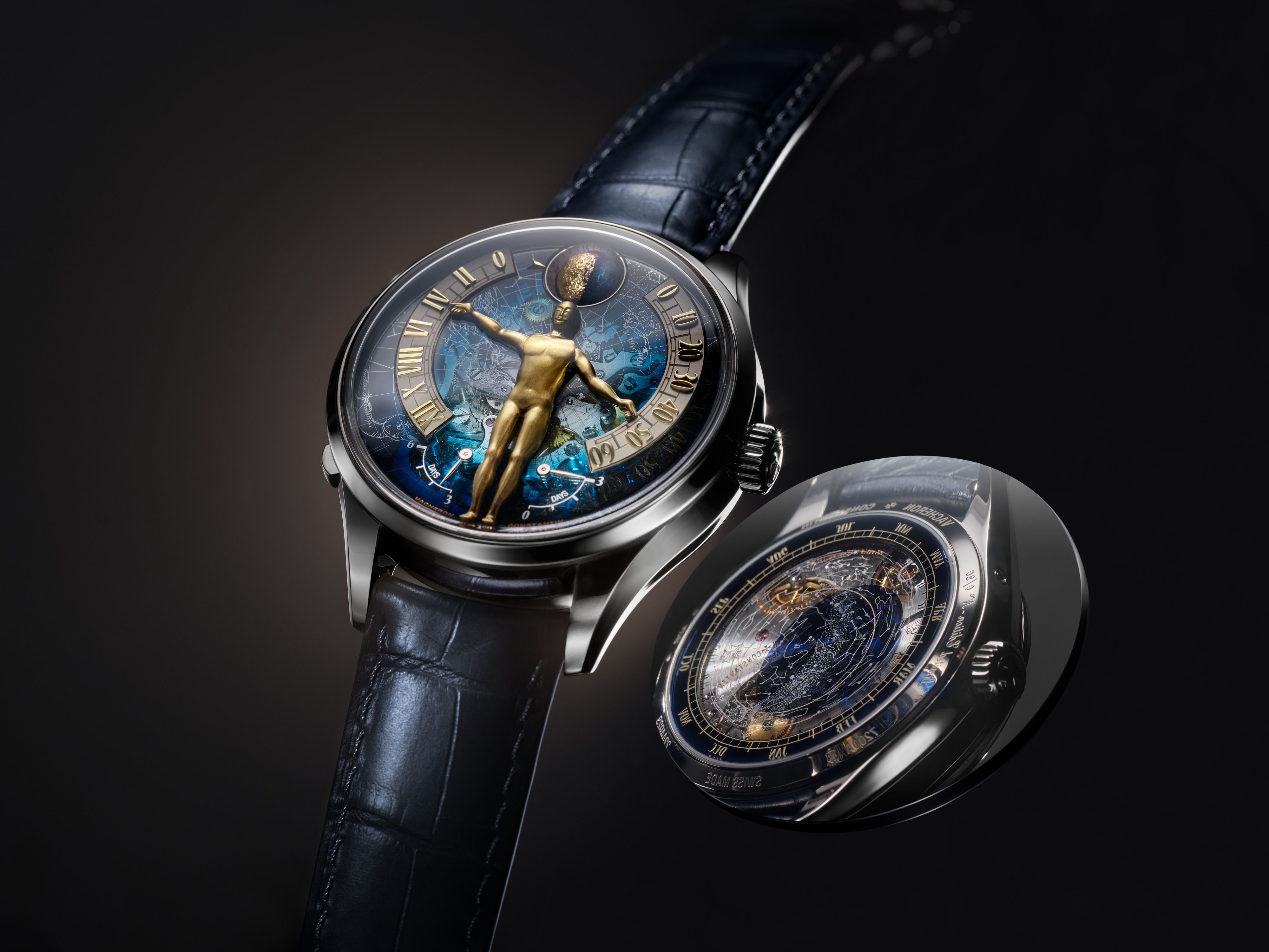
Of course, not every collector has space in their living room for a 550-pound automaton. For them, Vacheron has condensed the idea into the Métiers d’Art Tribute to the Quest of Time, a wristwatch limited to 20 pieces. Where the clock has the Astronomer, the watch has a smaller golden figure at its centre, using its arms to indicate the hours and minutes across retrograde arcs .
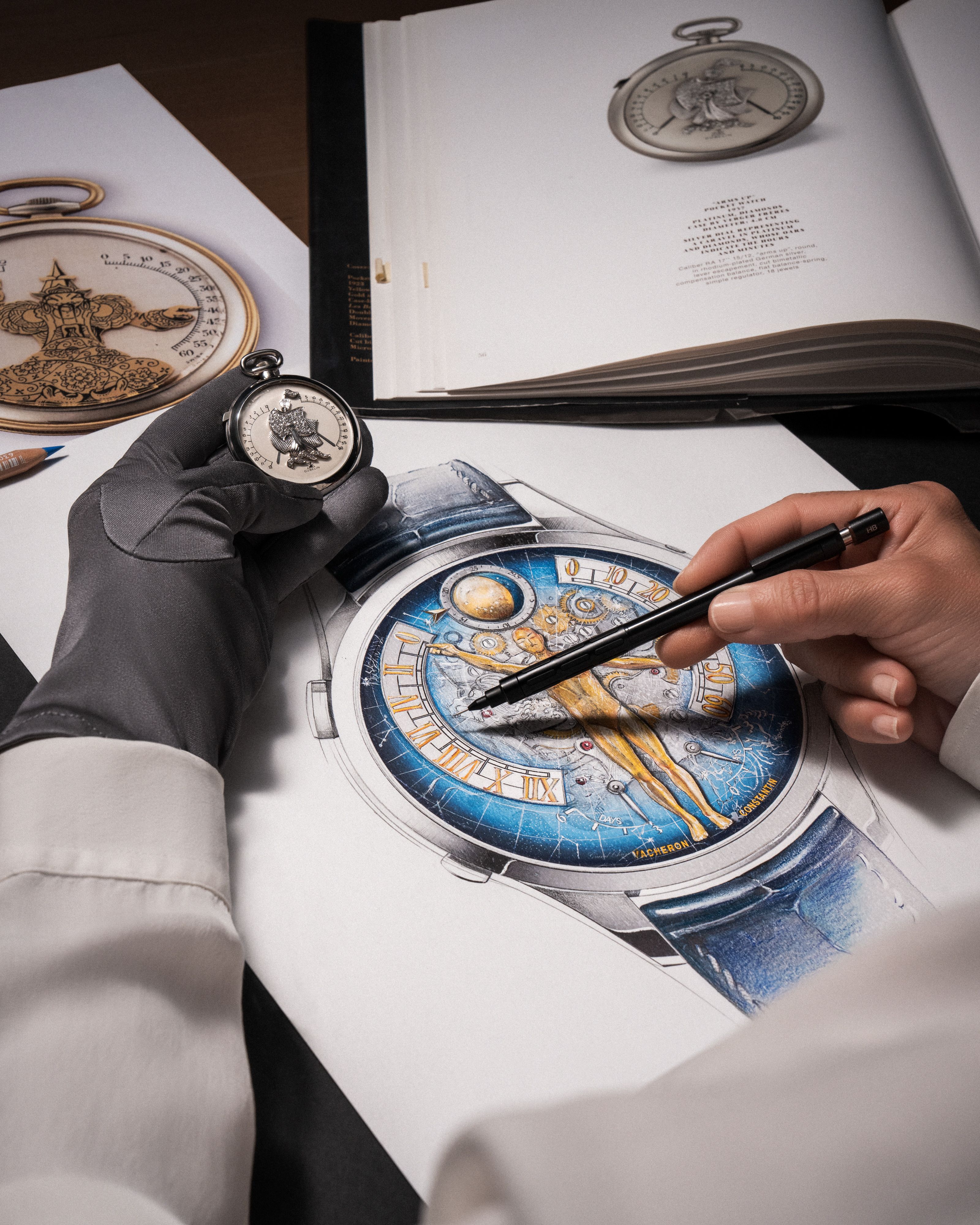
The new calibre 3670, developed over three years, is a piece of technical sleight-of-hand in itself: 512 components, four patents, a high-beat 5Hz escapement, and three barrels offering six days of reserve. The clever part is in the display. Like the 2019 Twin Beat perpetual calendar, it offers two modes: a continuous display, where the arms sweep across the arcs in real time, or an on-demand mode triggered by a pusher, where the figure only “comes to life” to show the time before returning to a neutral pose .
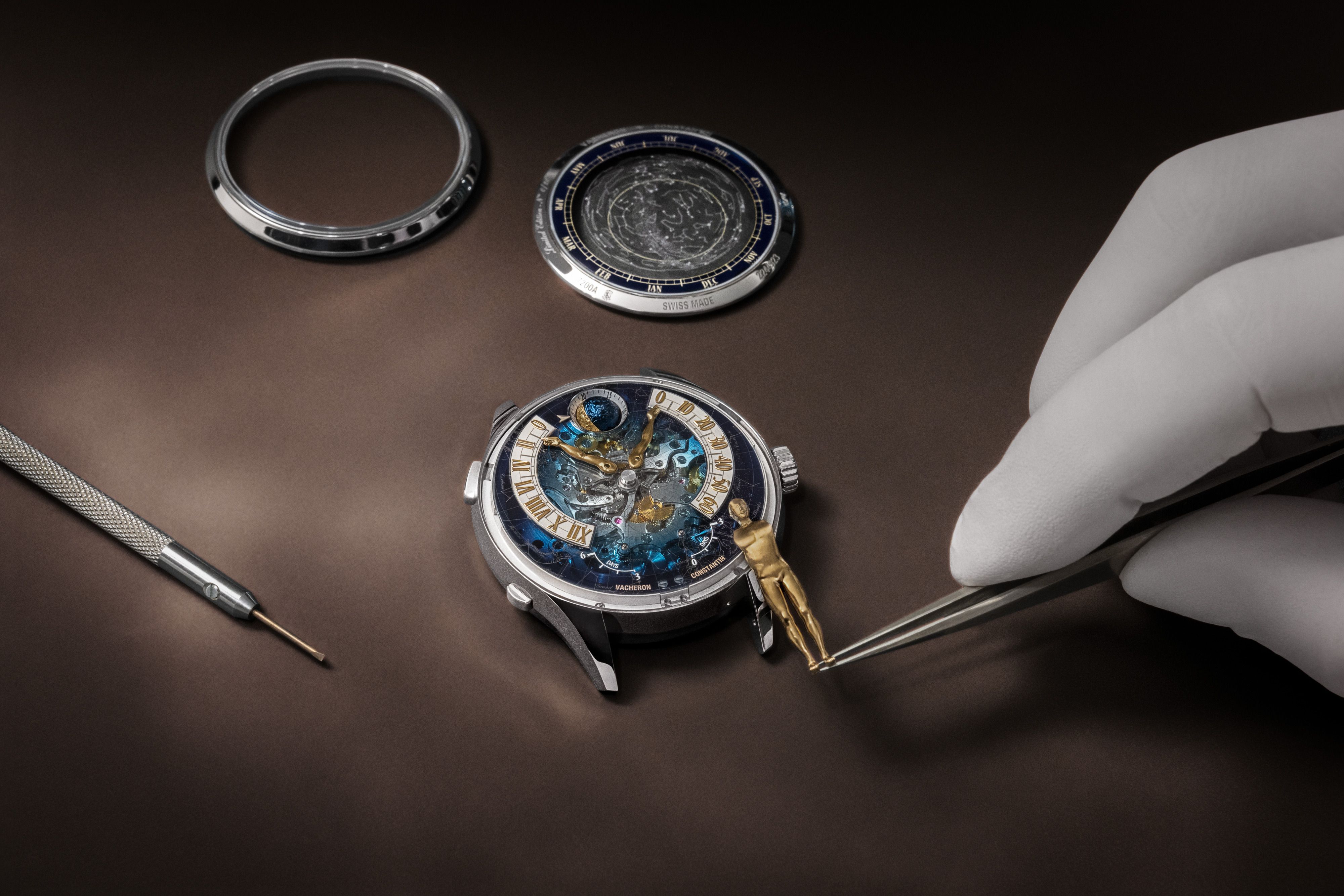
The rest of the complications lean heavily on Vacheron’s signatures. There’s a double retrograde power reserve, a 3D moonphase with age indication, and, on the reverse dial, a sidereal sky chart accurate to within one day every 9,130 years. Both dials reference the founding sky of 1755, determined with the help of astronomers from Geneva Observatory. Aesthetically, it’s a mix of tradition and modern craft: titanium and gold for the figure, enamel, guilloché, and laser engraving for the celestial backgrounds, all housed in a 43mm white gold case with Geneva Seal finishing.
Looking Back to Look Forward
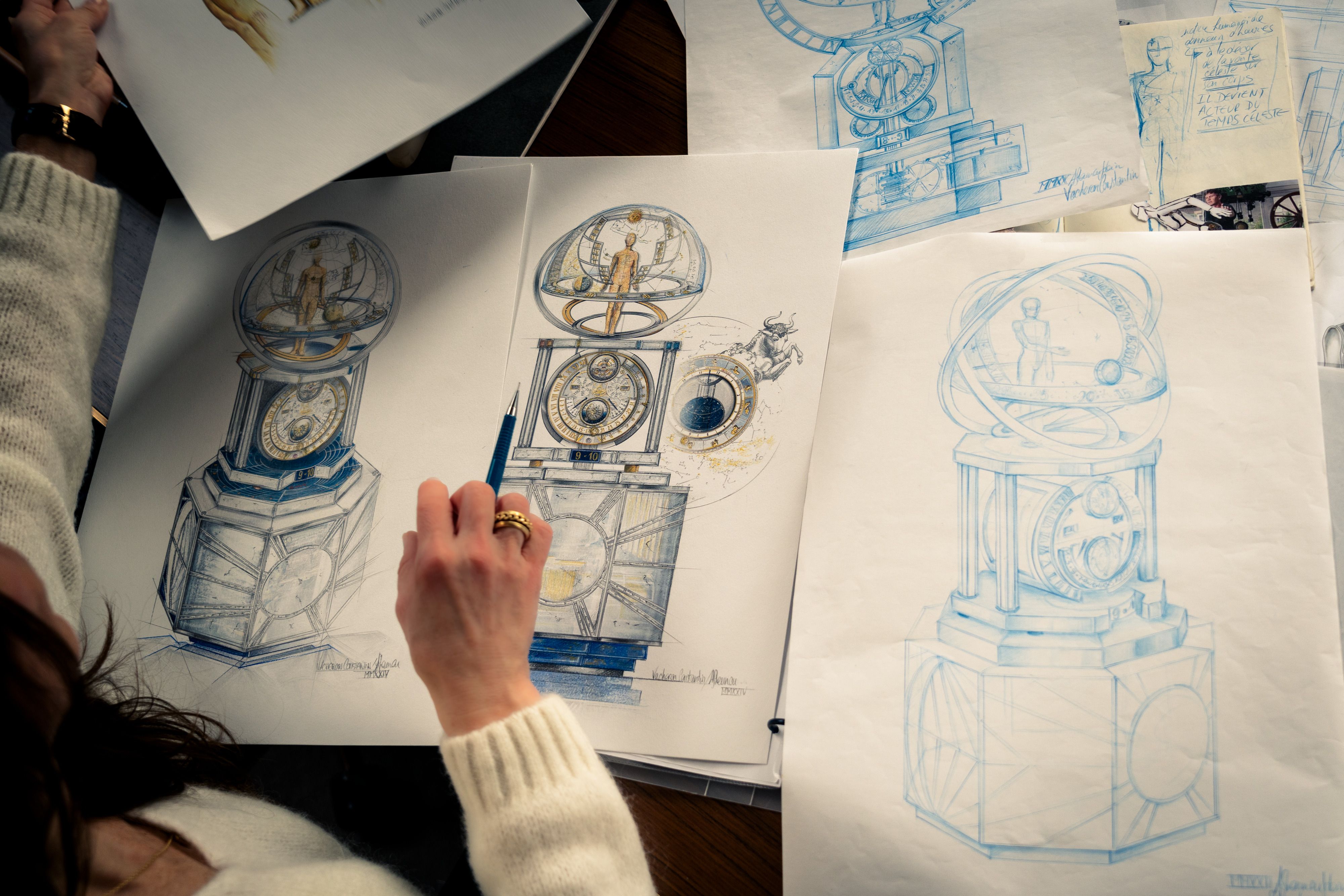
At 270, Vacheron Constantin is older than the United States and only slightly younger than the British Museum. In that time, it has produced tourbillons for kings, minute repeaters for industrialists, and more than its fair share of quietly elegant three-handers. Yet the throughline has always been an Enlightenment-era curiosity about how humans understand time. La Quête du Temps embodies that to an almost indulgent degree. It’s impractical, monumental, and utterly superfluous to modern life — which is precisely the point.
By making both an outsized clock for the Louvre and a handful of wristwatches for private clients, Vacheron has staged a reminder: this isn’t just an old watch brand celebrating another round number. It’s a maison still willing to ask questions about what time is, and how best to show it. Two hundred and seventy years on, that’s as good a birthday present to itself as you could imagine.
